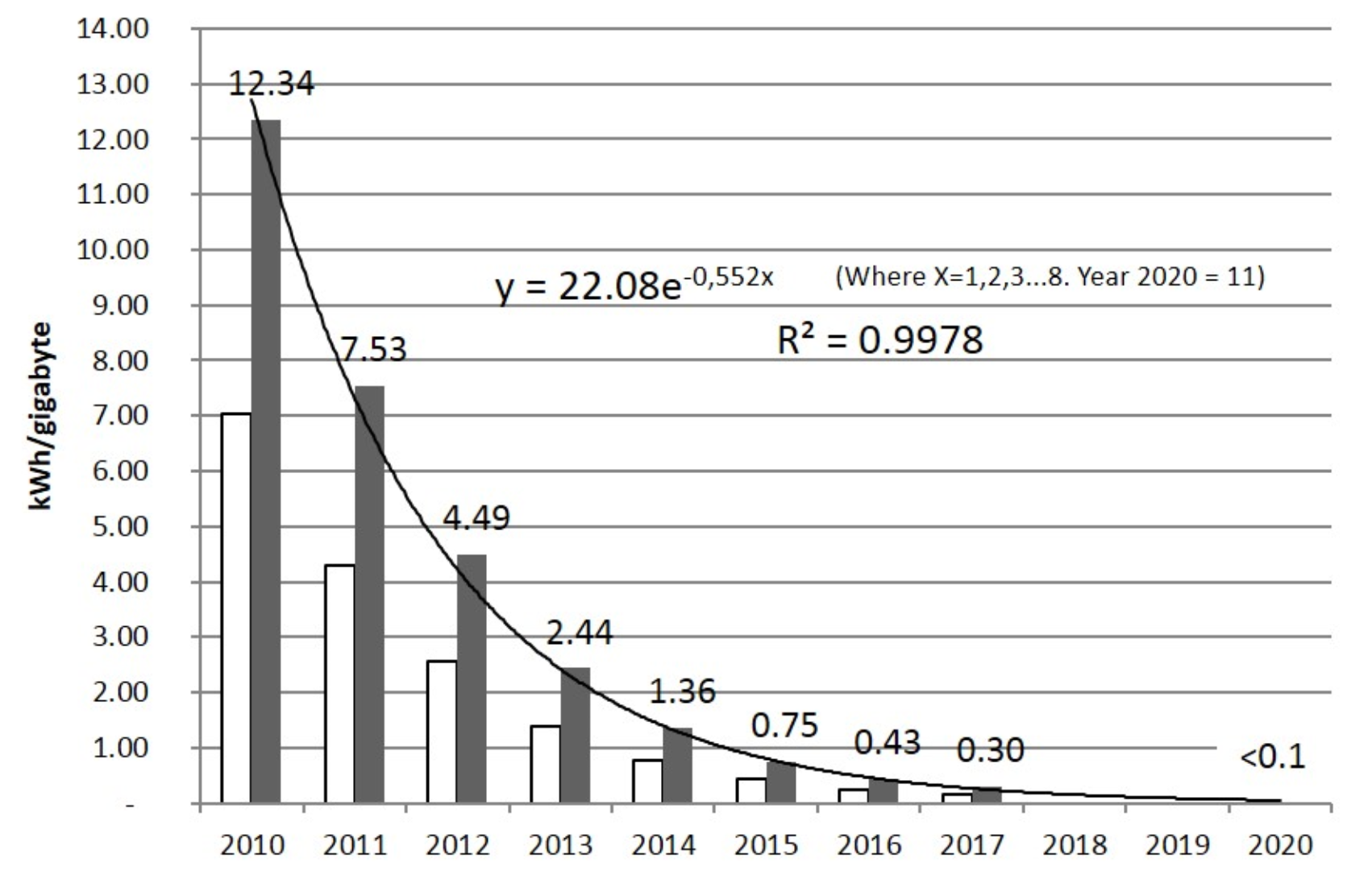Evaluating the Energy Consumption of Mobile Data Transfer—From Technology Development to Consumer Behaviour and Life Cycle Thinking
Status:: 🟨
Links:: Energy consumption of network communication
Metadata
Authors:: Pihkola, Hanna; Hongisto, Mikko; Apilo, Olli; Lasanen, Mika
Title:: Evaluating the Energy Consumption of Mobile Data Transfer—From Technology Development to Consumer Behaviour and Life Cycle Thinking
Publication Title:: "Sustainability"
Date:: 2018
URL:: https://www.mdpi.com/2071-1050/10/7/2494
DOI:: 10.3390/su10072494
Bibliography
Pihkola, H., Hongisto, M., Apilo, O., & Lasanen, M. (2018). Evaluating the Energy Consumption of Mobile Data Transfer—From Technology Development to Consumer Behaviour and Life Cycle Thinking. Sustainability, 10(7), Article 7. https://doi.org/10.3390/su10072494
Zotero
Type:: #zotero/journalArticle
Keywords:: [consumer behaviour, energy consumption, life cycle thinking, mobile access networks, Network]
Relations
Abstract
Mobile data consumption in Finland is among the highest in the world. The increase in mobile data usage has been rapid and continual future growth is foreseen. Simultaneously, consumer behaviour is changing. While new end-user devices are more and more energy-efficient and energy consumption per transferred gigabyte has significantly decreased, people spend more time and consume more data via their mobile devices than ever before. Does the increased usage outweigh the energy savings that have been achieved? What options are available for tackling increasing energy demand? And should consumers have a role to play in this discussion? This paper examines the current and future trends that results from the energy consumption of mobile data transfer and mobile networks in Finland. The findings presented in this paper are based on a top-down energy intensity estimate and publicly available data, which was employed to construct an illustrative trend (kWh/gigabyte) for the energy consumption of transmitted mobile data for the years 2010–2017. In addition, energy consumption related to mobile data transfer is discussed from a life cycle perspective, considering both direct and indirect energy use. Finally, the challenges in conducting such assessments are examined.
Notes & Annotations
📑 Annotations (imported on 2023-12-02#19:06:33)
An estimate of the overall energy consumption of all operators in Finland was around 0.6 TWh/a in 2017. This corresponds to 0.7% of the total annual electricity consumption in Finland in 2017 (85.5 TWh/a).

Figure:
Development of energy efficiency of transmitted mobile data (kWh/gigabyte) in Finland during 2010–2017. Grey bars represent estimated consumption for production networks and white bars for base stations only. Exponential trends (y = y(x)) until 2020 were estimated by means of least squares fit using the data in the grey histogram. X in these equations refers to numbers 1 to 8; and 11 corresponding to years from 2010 through to 2017; and 2020.
Based on data usage and electricity consumption data, it can be estimated that, during 2016 the specific electricity consumption per one gigabyte decreased below the level 0.5 kWh/gigabyte and will continue to decrease when the capacity utilisation factor of existing 4G LTE networks improves. Based on the equation (presented in Figure 3) the 0.1 kWh/gigabyte level could be achievable by around 2020 even though annual electricity consumption might increase in comparison to the current level.
Within the service- or device-specific life cycle studies, it has often been difficult to evaluate the role of network energy consumption due to lack of generalised data related to the energy consumption of the network and its different parts. The available estimates of the energy intensity of the Internet have differed at most by a factor of more than 20,000, ranging from 136 kWh/gigabyte to 0.0064 kWh/gigabyte [42]. A large variety within the results has been explained by differences in system boundaries, applied assumptions and the year to which the data applies [18].